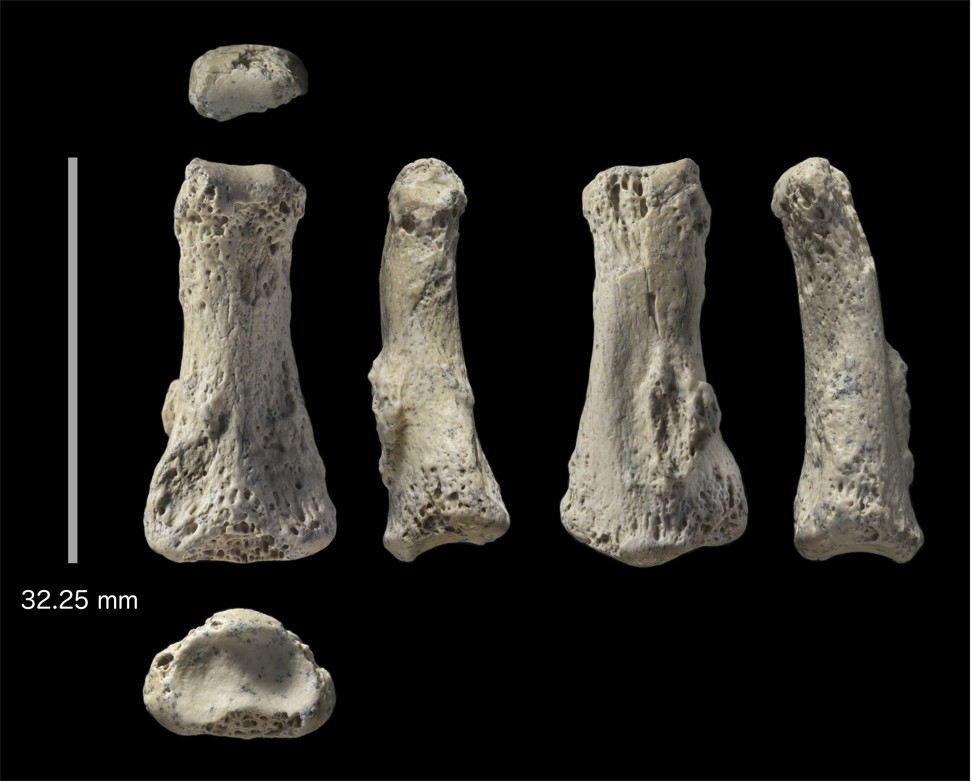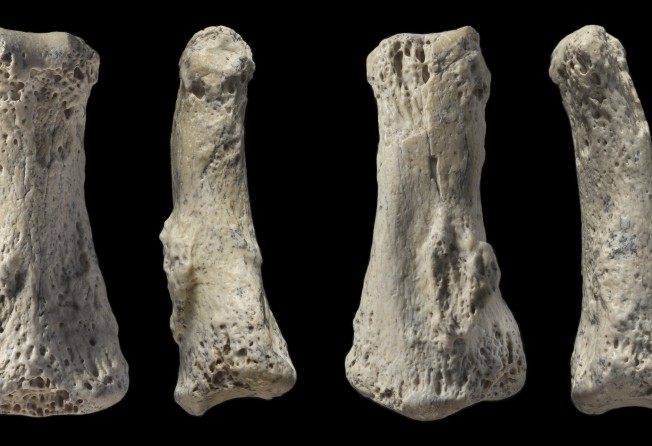
Finger bone found in Saudi Arabia upends story of human migration out of Africa
Recent discoveries poke holes in the theory that modern humans left their home continent about 60,000 years ago and stayed near the coasts as they spread out across the world

It’s only three centimetres long and less than one centimetre wide, but it has the potential to rewrite the history of our ancestors’ migration out of Africa.
The object in question is a fossilised piece of a bone, probably the middle portion of a middle finger. Based on its shape, scientists believe that it belonged to a member of the Homo sapiens species.
Two things make it unusually significant.
First, uranium series dating techniques indicate that the bone is between 85,000 and 90,000 years old.
Second, it was found in Al Wusta, a site in Saudi Arabia’s Nafud desert that is hundreds of miles from the nearest coastline.
Those factors stand in sharp contrast to the traditional “out of Africa” narrative of human migration.

Based on both archaeological evidence and genetic analysis, this theory claims modern humans left their home continent about 60,000 years ago and stayed near the coasts as they spread out across the world. But recent discoveries have poked holes in this story.
Scientists have found what appear to be Homo sapiens teeth in Chinese caves that suggest humans arrived there much earlier.
In the Fuyan Cave, for instance, teeth were found among mineral deposits that were at least 80,000 years old. In the Luna Cave, more teeth were uncovered among material that is believed to be between 130,000 and 70,000 years old.
In Australia, archaeologists turned up 65,000-year-old stone tools and other artefacts that suggest humans had reached the northern part of the continent by then.
The finger bone from Al Wusta, however, marks the first time scientists have tested the age of a human fossil from so far beyond Africa and found it to be significantly older than 60,000 years.
A report on the work was published on Monday in the scientific journal Nature Ecology & Evolution.
“This discovery of the fossil finger bone, for me, is like a dream come true,” said archaeologist Michael Petraglia, the senior author of the study.
“It has major implications with respect to how our species came out of Africa and the route and the pathways that they took out of Africa.”

The bone itself was found poking out of the surface of the Al Wusta excavation site in 2016 by Iyad Zalmout, a palaeontologist with the Saudi Geological Survey.
“He picked up the bone,” Petraglia recalled, “and he immediately recognised it as human. It was that distinctive.”
To be absolutely sure, members of the study team put the fossil in a CAT scanner and took precise measurements of its shape. Then they compared that shape with dozens of finger bones from humans, non-human primates and extinct hominid species.
Although the fossil “falls within the range of variation” of gorillas, Old World monkeys, Neanderthals, Australopithecus afarensis and A sediba, all of its shape ratios are “most similar” to the finger bones of Homo sapiens, according to the study.
Using lasers, researchers collected a microscopically small sample of the fossilised bone and used it to gauge its age. The analysis showed that that bone was about 87,600 years old, give or take 2,500 years.
The finger bone wasn’t the only find at the site.
Team members also unearthed hundreds of animal fossils, including hippopotamuses, antelope and extinct species of African wild cattle.
“These animals tell us that when humans were living there, it was not a desert,” said first author Huw Groucutt, an archaeologist at the University of Oxford. Instead, monsoon rains had transformed the area into a grassland with freshwater lakes and rivers. “There were abundant animals and a lot of people living there,” Groucutt said.
In fact, lush periods like this one might have turned the Arabian Peninsula into “a sort of staging post that sucks people in and them pumps them out” to spread further east into Eurasia, he added.
The findings demonstrate that climate change aided the spread of our species earlier than previously thought. When the Saudi finger bone is combined with the teeth from China and the artefacts from Australia, “it does all fit together very neatly,” Groucutt said.
It’s a convincing story that changes our view of Homo sapiens’ emergence from Africa, according to University of Tulsa anthropologist Donald Henry, who was not involved in the new work.
When sea levels were lower than they are today, our ancestors could have crossed from Africa to the southern tip of the Arabian Peninsula via the Bab el Mandeb strait, Henry said.
Today, this is where the Red Sea meets the Gulf of Aden. But 90,000 years ago, there would have been a large river and an extensive fertile area that welcomed plants, animals and even humans.
“Tracing the evolution and geographic dispersal of the human lineage is rather like connecting pitifully few dots on a vast three-dimensional grid of time and space,” Henry wrote in an essay that accompanies the study.
The fossilised finger bone represents “a very significant dot that provides a new reference point for human dispersal.”